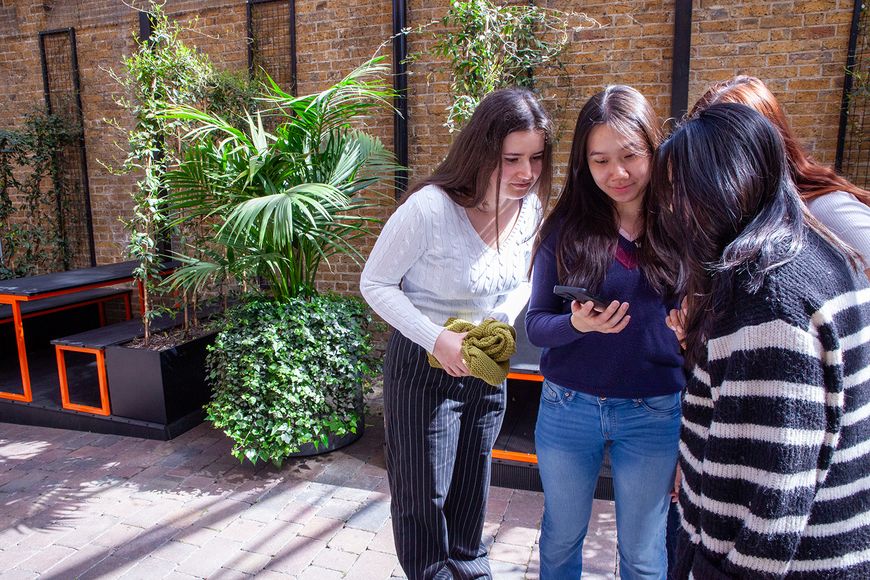
Design Apprenticeships
If you're weighing up your options after GCSEs or A-levels and wondering whether there's a route into design that doesn't involve three years at university, you’re in the right place. This is your full guide to design apprenticeships. From where to find them and how to apply, we’ve got you covered.

What is a design apprenticeship?
A design apprenticeship is a paid job where you work for a company while studying towards a qualification. You'll split your time between working on real projects (learning from experienced designers) and structured training either at a college, university or on-site in the office.
What you'll actually be doing depends on the type of design apprenticeship you choose. Let’s explore some of them:
Graphic design. If you love drawing, you’ll spend your time creating logos, social media assets, marketing materials and brand visuals using programmes like Adobe Illustrator.
Interior design. You’ll plan and design indoor spaces. From homes to offices and even stores. Your tasks can include creating floor plans, sourcing furniture and visiting sites.
Game design. If you love the behind-the-scenes aspect of gaming, you’ll create concept art, character design, 3D modelling or design levels and game mechanics.
Motion graphics. You’ll create animated videos, title sequences and social media content that combines design with movement.
Your day-to-day will depend on the type of design you choose, but you can expect a mix of creative work, client and team meetings, and training. You’ll always have something to work on.
Ever wanted to know what it’s like to design sets at the Royal Ballet and Opera? This is what one apprentice got up to during their time as a Creative Venue Technician:

No two days are the same. I move departments every 2 and 4 weeks, and get to explore everything backstage in a theatre. I have done everything from building the sets that are going on stage, to giving cues in stage management, to operating a show with lighting control. It is constantly changing and super interesting. Creative Venue Technician, Royal Ballet and Opera
How long does a design apprenticeship take?
It varies depending on the level.
Level 2 (intermediate) apprenticeships typically take 12-18 months. You need to be age 16+.
Level 3 (advanced) apprenticeships usually last 18-24 months. You need to be age 16+.
Higher and degree apprenticeships can take three to five years, as they're equivalent to a foundation degree or a full bachelor's degree. You need to be age 18+.
Are design apprenticeships worth it?
100%. Design is a rewarding career, but it’s super competitive. The average graduate job gets around 140 applications per role. By getting an apprenticeship, you’re beating off 99% of the competition by getting your foot in the door early.
An apprenticeship is a great option if you’re itching to fast-track your career right after school.
What qualifications do I need for a design apprenticeship?
Entry requirements depend on the level you’re interested in. Let’s break it down:
Level 2 (Intermediate): Usually don't require GCSEs, but some employers might want a few passes at grades 3 to 9 (or equivalent), and you’ll need to be over 16. These are great if you're just starting or want to build foundational skills.
Level 3 (Advanced): You’ll need five GCSEs at grades 9 to 4 (A* to C), including English and maths, and be over 16. Some employers might also want to see a portfolio or examples of your creative work.
Level 4/5 (Higher): You’ll need at least two A-Levels, a Level 3 qualification or equivalent. You'll may also need a strong portfolio
Level 6/7 (Degree): You'll need at least 3 A-Levels and between 112 to 120 UCAS points (this can vary depending on the employer). You'll also need a strong portfolio. Be sure to read our Guide to Design Degree Apprenticeships if you're interested in this route.
That said, every employer is different. Some focus more on your passion, creativity and potential than on your grades. If you're worried about not hitting the formal requirements, it's always worth applying anyway, especially if you can show your skills through a portfolio.
Do I need a portfolio for a design apprenticeship?
Absolutely! You might think that just because you’re only just leaving school or college, you don’t have anything to show off. You do!
Portfolios aren’t about work done for big brands; they’re about showing off your creativity and all the really damn cool ideas you have.
Whether you’re into graphic design or constantly browsing Ikea for the latest, there are loads of free portfolio builders out there. Some builders you can use include:
Where can you do a design apprenticeship?
So many places! Whether you’re looking for an opportunity with a global design agency or a small start-up, you can find a design apprenticeship across a wide range of industries.
Think creative agencies, local brands and in-house design teams. Here are some of the employers looking for the future in design talent:
Here’s how one apprentice felt about their time as a Garment Technologist apprentice at ASOS.

I have thoroughly enjoyed the program, I feel it has made me a better person, employee and future manager. I have learnt a lot of new skills, including and not limited to: collaborative working, coaching, mentoring, self-awareness, psychological safety and inclusivity. I have also developed time management skills, meeting tools and how to solicit and give constructive feedback. Garment Technologist Apprentice, ASOS
Do design apprentices get paid?
Yes! The whole point of an apprenticeship is to earn while you learn. How much you earn depends on the level you’re at, but you can expect to earn around £24,000 to £35,000 per year. The more experience you gain and move up, the more you’ll earn.
Once you’re fully qualified in whichever field you’ve chosen, there’s potential to earn a lot more. For example, as a graphic designer, you could be paid around £40,000 per year. Into product design? You could earn £55,000 per year.
How to apply for a design apprenticeship
Found a role you love? It’s time to apply. You’ll start with crafting your apprenticeship CV and cover letter (make sure you tailor both for each apprenticeship you apply for). Mention any relevant projects you’ve done or hobbies you’re involved in.
Your portfolio will be the star of the show, so make sure you’re including your best work. If you haven’t done any professional work, don’t worry about it! Your best school projects or designs you’ve done in your free time are perfect.
You’ll then be invited to an apprentice assessment centre where you’ll take part in group tasks and one-to-one interviews.
Need a little help getting started? We’ve got you covered. Download our free application toolkit; it’s packed with everything you need.
Download your free toolkit

























